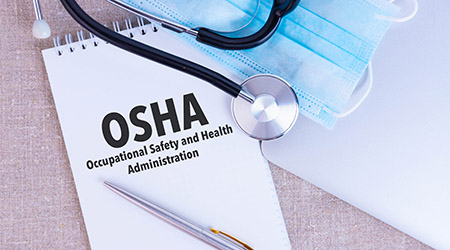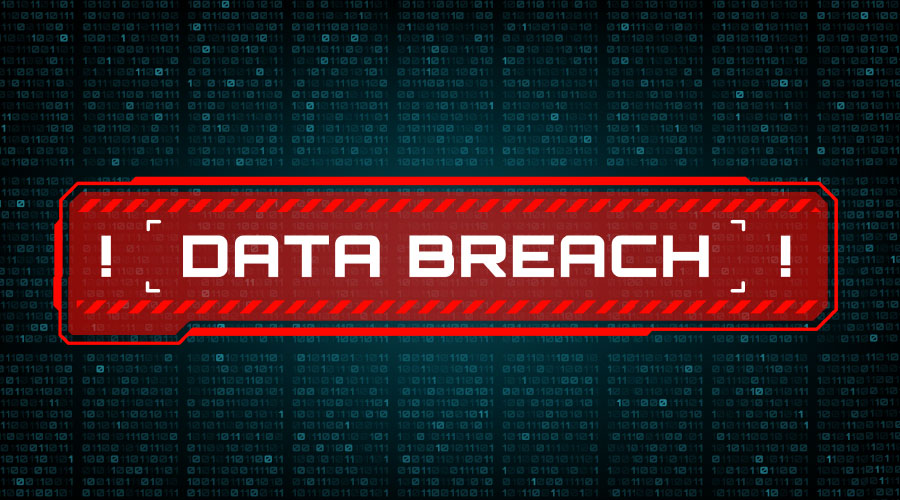The Healthcare COVID-19 Emergency Temporary Standard (ETS) has been in effect for over two months, and enforcement by federal and state compliance safety and health officers is underway. The Occupational Safety and Health Administration (OSHA) has announced plans to target onsite inspections in hospitals, assisted living complexes, nursing homes, and other facilities treating patients with COVID-19.
OSHA detailed its enhanced enforcement under a national emphasis program, revised on July 7, 2021, which directs resources toward high-risk employers, such as healthcare organizations, and is intended to accelerate the agency’s enforcement of safety standards related to COVID-19. OSHA will use its enforcement discretion for employers making a good faith effort to comply with the ETS and provide documentation of a COVID-19 prevention plan.
Fighting COVID-19
On June 10, 2021, OSHA issued the COVID-19 Healthcare ETS that requires healthcare employers to follow safety and infection prevention requirements related to COVID-19. Since July 6, 2021, all types of healthcare facilities including acute care, long-term care, skilled nursing, and assisted living facilities have been subject to OSHA enforcement if not compliant with ETS requirements.
The standard is intended to mitigate the spread of COVID-19 in the healthcare industry, where workers have been at higher risk of infection across the various sectors they serve, and to address COVID-19 hazards not covered by OSHA’s General Duty Clause or existing regulations. The ETS applies to healthcare services and healthcare support services, including emergency responders, home healthcare workers, and ambulatory care settings where suspected or confirmed coronavirus patients are treated. It addresses policies and procedures, personal protective equipment (PPE), administrative controls and engineering controls to reduce the risk of infection.
Major health and safety policies and procedures required in a written plan include:
- performance of a formal hazard assessment
- development of a written COVID-19 prevention plan
- PPE requirements
- mask, social distancing, and barrier requirements
- cleaning and disinfection procedures
- training on COVID-19 prevention and relevant policies and procedures
- procedures for aerosol-generating procedures
- adequate building ventilation
- daily screening of employees, patients and visitors
- vaccination and paid leave
- anti-retaliation policies
- recordkeeping
- reporting COVID-19 fatalities and hospitalizations to OSHA
- preparing for enforcement.
Healthcare employers subject to the ETS should perform internal audits of their current programs to determine if they comply. Many facilities might already have implemented COVID prevention policies as a part of their infection prevention and control programs. But some requirements of the regulation are specific to COVID-19 and will need to be addressed, such as the mini respiratory protection program, paid leave requirements, and additional training, recordkeeping, and reporting obligations.
What will enforcement look like?
OSHA’s revised interim enforcement response plan updated its enforcement directive originally issued on June 28, 2021, and titled, Inspection Procedures for the COVID-19 Emergency Temporary Standard. The directive delineates enforcement procedures and details the way compliance safety and health officers will perform COVID-19 related inspections and issue citations. Inspections are expected to focus on protections in place for workers who are unvaccinated or not fully vaccinated, where it is recommended to implement multiple layers of controls to limit potential exposures.
Per the OSHA directive, inspections will begin with program and document review, where inspectors will request access to the written COVID-19 plan to validate whether a workplace hazard assessment has been performed and to review the policies and procedures in place to minimize risk to employees and the process for determining the plan’s effectiveness. Inspectors also will conduct an interview with the COVID-19 safety coordinator to evaluate their involvement with implementing, monitoring and reporting on the plan, followed by a walkthrough of the facility to evaluate to health screening, physical distancing, ventilation systems, and PPE use.
Citations may be issued if a facility is lacking a COVID-19 plan and if other requirements of the standard have not been implemented, recognizing that each component failing compliance can be cited as separate violations. Of note, the July 2021 updated OSHA directive acknowledged that respirator supplies and services are no longer experiencing shortages. So OSHA has terminated its temporary enforcement discretion for noncompliance with its respiratory protection standard and PPE requirements.
To support OSHA enforcement with needed resources and increased staffing, the White House included a mechanism its $3.5 trillion reconciliation bill that has a proposed increase in fines to employers that “willfully,” “repeatedly” or “seriously” violate a section of labor law that deals with hazards, death, or serious physical harm to their employees. The increased fines could run as high as $70,000 for serious infractions and $700,000 for willful or repeated violations. It has also been reported that funding will be used to expand the number of OSHA inspectors to allow for additional enforcement. In the meantime, OSHA will likely continue to use its limited resources on high-risk industries, such as healthcare and areas with lower vaccination rates.
Recent updates
The White House recently announced additional requested updates to the ETS that will affect healthcare facilities in particular. The administration will require the Centers for Medicare & Medicaid Services to mandate vaccinations or weekly testing for healthcare workers, service providers, and volunteers in healthcare settings that receive Medicare or Medicaid reimbursement. Currently, employers must only support COVID-19 vaccinations for each employee by providing reasonable time and paid leave for vaccination and any side effects experienced following vaccination.
Continued compliance with the ETS, as well as existing federal and local regulations, will require diligent attention from facility managers. Preparing for OSHA compliance now, combined with continued prioritization surrounding worker protection, is optimal to ensure employees have a safe workplace free from recognized hazards related to COVID-19.
Shari L. Solomon, Esq., is president and founder of CleanHealth Environmental, LLC. CleanHealth provides infection prevention and industrial hygiene training and consulting services geared toward facility personnel and vendors responsible for infection prevention, cleaning and disinfection, and facility operations and maintenance practices. Solomon possesses more than 20 years of environmental consulting and federal regulatory experience.

 Oracle Health Hit by Data Breach, Patient Data Possibly Compromised
Oracle Health Hit by Data Breach, Patient Data Possibly Compromised Ground Broken on New MD Anderson Sugar Land Facility
Ground Broken on New MD Anderson Sugar Land Facility Florida State University Reveals Plans for Panama City Beach Hospital
Florida State University Reveals Plans for Panama City Beach Hospital The Effect of Over-Cleaning on Human Health
The Effect of Over-Cleaning on Human Health Rumored Terror Threat to Hospitals Prompts FBI Warning
Rumored Terror Threat to Hospitals Prompts FBI Warning